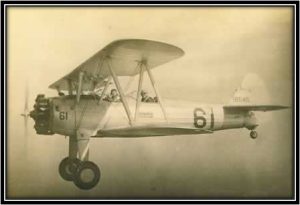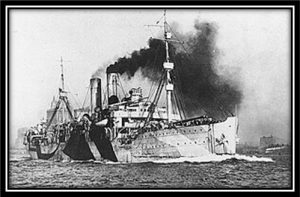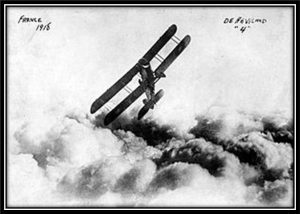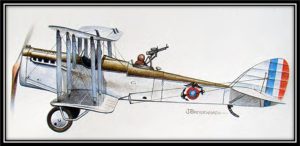Aviation History: On This Day and Tomorrow Too
Contributor: Barry Fetzer
Sources: History.com, Lonestar Flight Museum, Wikipedia.com, Marine Corps University
For we aviation heritage aficionados, July is a big month for aviation history. But it doesn’t take much digging at all to find aviation history everywhere we look, January through December. Still, July is one busy month as today’s twofer aviation history vignette highlights.
What is it about July that made it and makes it such a big aviation history month? It is a celebratory month, the month of our nation’s birth. It’s a pretty good weather month, overall, for aviation. From a timing perspective, it’s midway between early spring’s “roaring in like a lion” and the coming of winter weather. Maybe these are some of the reasons July “shines” in aviation history.
For the first of our two end of July vignettes and according to History.com, “On July 29, 1958 President Dwight David Eisenhower signed the National Aeronautics and Space Act, creating the National Aeronautics and Space Administration (NASA). IKE was the first US President to hold a pilot’s license. He learned to fly while stationed in the Philippines in 1935 in a PT-17 Stearman.
According to the Lonestar Flight Museum in Houston, “The Army and Navy both used the trusty Stearman (also known and the Boeing Model 75 or the “Kaydet”) where they were referred primarily as PT-17 with the Army and N2S-3 with the Navy. Although the Stearman was challenging to fly in the hands of a student pilot with no previous experience, it allowed instructors to quickly evaluate student performance and move those who were not progressing into other jobs. Made primarily out of wood and fabric with a steel tube fuselage, the Stearman was one of the strongest trainers built during World War II. After the war, many Stearmans soldiered-on for decades as crop dusters and air show performers.

The PT-17 Stearman. Courtesy of WWIIflighttraining.org
“From 1934 until February 1945, the Stearman Aircraft Company, a division of the Boeing Aircraft Company, built a total of 8,428 model 75 airplanes for the U.S. Army and U.S. Navy for use as primary trainers. During this 11-year span, more American military pilots learned to fly in the Stearman model 75 primary trainers than any other airplane.”
And for the second of our end of July aviation history vignettes, according to History.com, “Headquarters company and squadrons A, B and C of the First Marine Aviation Force (FMAF) arrived in Brest, France aboard USS DeKalb on 30 July 1918. The squadrons were redesignated as 7, 8 and 9 upon arrival, manned by mostly Marine Corps Reserve manpower.”
First, a bit about the USS DeKalb: According to Wikipedia, “when the United States entered the First World War in April 1917, US Customs officials seized her (from Germany) and she was transferred to the US Navy. She was reconditioned and refitted as a troop transport and renamed USS DeKalb after General Baron Johann de Kalb. She was commissioned 12 May 1917.

USS Dekalb underway, circa 1918. Courtesy of Wikipedia.
“DeKalb was assigned to the Cruiser and Transport Force, Atlantic Fleet, and on 14 June 1917 sailed in the convoy carrying the first troops of the American Expeditionary Forces to France. Unlike the other transports with Army troops embarked, DeKalb transported United States Marine Corps, 5th Regiment of Marines. In the next 18 months DeKalb made 11 such voyages, carrying 11,334 soldiers safely. Among these was the First Marine Aviation Force who flew the day wing bombers of the Northern Bombing Group.”
According to the Marine Corps University in its periodical “The Marines in WWI” (https://www.usmcu.edu/Outreach/Marine-Corps-University-Press/MCH/Marine-Corps-History-Summer-2016/The-US-Marines-in-World-War-I/) by Colonel Walt Ford, USMC (retired) (an old friend, former boss, and fellow Marine), “Upon arrival in France and, with a shortage of aircraft, the Marines turned to the British Royal Air Force (RAF), with its numerous available aircraft and lack of fully trained pilots, for FMAF pilots to gain flight time. Marine pilots and observers were assigned to RAF Squadrons 217 and 218 to fly combat missions over the German lines (flying de Havillands). One of these pilots, Second Lieutenant Chapin C. Barr, flying with Squadron 218, died on 29 September 1918 of wounds received in a combat raid over enemy territory. Barr was awarded the Navy Cross for his actions in combat and was the first Marine aviator to die as a result of enemy action in WWI.”

The DH-4 in the skies over France. Courtesy of Wikipedia.
According to Wikipedia, “The Airco DH-4 was a British two-seat biplane day bomber of the First World War. It was designed by Geoffrey de Havilland (hence ‘DH’) for Airco, and was the first British two-seat light day-bomber capable of defending itself.”

The DH-4 and the Marines in World War I,” a watercolor by aviation artist Jason Breidenbach, shows the aircraft that Marines successfully flew in WWI. Courtesy of Leatherneck magazine
Onward and upward!







